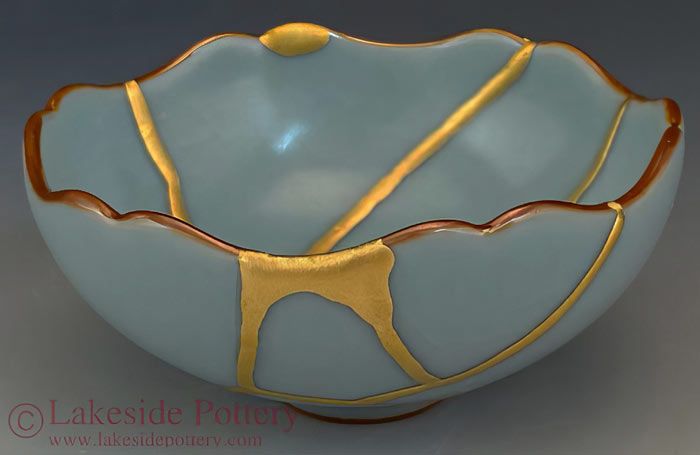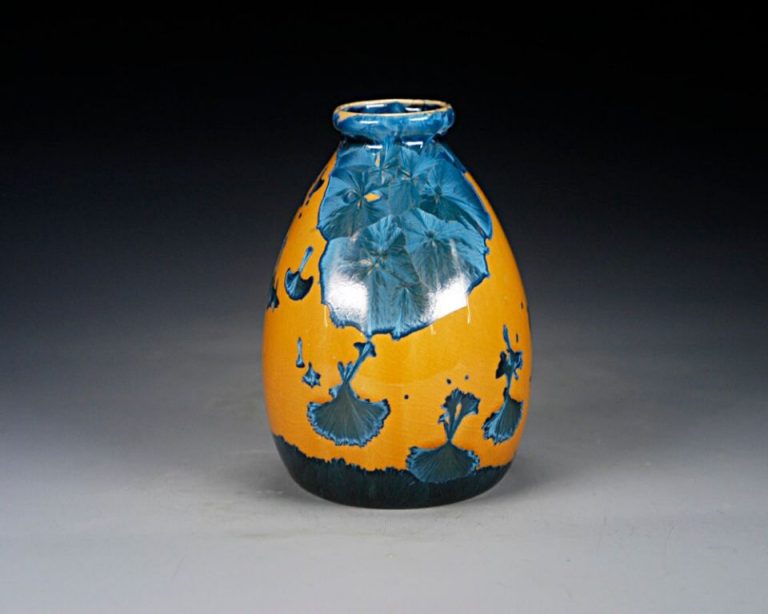How Do You Seal And Strengthen Air Dry Clay?
Air dry clay, also known as modeling clay, is a non-hardening clay that dries by evaporating water rather than requiring heat from an oven. It is made from a mixture of water, glue and clay minerals such as kaolinite.
Some of the pros of using air dry clay include:
- No baking required – projects can be completed at room temperature
- Easy to work with and mold into shapes
- Dries relatively quickly within 24-48 hours
- Affordable and accessible
Some potential cons include:
- Not as durable as polymer or ceramic clays
- Can crack or break if very thin or improperly dried
- Surface remains slightly tacky
- Colors may fade over time
Common uses for air dry clay include:
- Crafts and decorative items like figurines, jewelry, wall hangings
- Basic pottery like bowls, vases, cups
- Children’s projects and toys
- Model buildings, landscapes and miniatures
- Light claymation and stop motion projects
Sealing Air Dry Clay
Sealing air dry clay pieces is an important final step before using them. Sealing serves multiple purposes – it helps protect the clay from moisture which can cause cracking or softening, provides a smooth even surface finish, and gives the clay a uniform sheen. Unsealed clay has a porous, absorbent surface which shows fingerprints easily. Applying a sealant creates a protective barrier.
There are several sealant options commonly used with air dry clay:
– Acrylic spray sealants – These are lightweight and easy to apply. Make sure to apply multiple thin coats and avoid pooling. Let dry completely between coats.
– Polyurethane spray sealants – Provide a high gloss finish and durable protection. Use in a well-ventilated area. Apply multiple light coats allowing drying time between.
– Varnish – Offers a classic glossy finish. Use a brush on varnish and apply thin even coats. Allow ample drying time between coats.
– Epoxy resin – Creates a thick plastic-like coating for maximum protection. Best for items that will have heavy use. Follow directions carefully.
– Wax sealants – Provide a smooth satiny finish. Buff well after applying wax to remove excess.
When applying any sealant, work in a well-ventilated area and avoid oversaturation. Read directions carefully and let dry fully between coats. Sealing the clay properly will help your finished pieces last for years to come.
Acrylic Spray Sealants
Acrylic spray sealants are a popular option for sealing air dry clay. They provide a protective barrier against moisture and handling. Some key benefits of acrylic sprays include:
- Dries quickly and provides a uniform, clear finish.
- Available in matte, satin or gloss finishes.
- Does not yellow over time like some sealants.
- Easy to apply with an even coat.
There are acrylic sprays formulated specifically for clay crafts and ceramics. These are best for sealing air dry clay as they are designed for porous materials. Some good options include Krylon’s Seal It! Acrylic Spray and Sculpey’s Triple Thick Gloss Glaze.
When using an acrylic sealant, it’s important to apply multiple thin coats rather than one thick coat. This prevents pooling and drips which can leave an uneven finish. Lightly spray the piece from about 12 inches away, let dry, and repeat for 2-3 coats. Be sure to spray in a well-ventilated area and avoid breathing in the vapors directly. Allow the piece to fully cure for at least 24 hours before handling.
Polyurethane Spray Sealants
Polyurethane spray sealants are popular for sealing air dry clay sculptures and projects. Here are some of the key benefits of using polyurethane sprays:
Polyurethane forms a plastic-like coating that fully seals the clay surface. This prevents moisture and oxygen from reaching the clay, which can otherwise cause drying, cracking and deteriorating over time. The airtight seal locks in the colors and protects fine details and textures.
Polyurethane sprays dry clear and leave a smooth, glossy finish. They create a durable, scratch-resistant barrier that maintains the aesthetic appearance of the clay artwork. The glossy coat also enhances the visual depth and vibrancy of the colors.
Polyurethane has flexible properties that allows it to resist chipping or flaking over time. Even with changes in temperature and humidity, polyurethane expands and contracts along with the clay without cracking or peeling.
When applied in thin coats, polyurethane does not yellow, remaining optically clear as it ages. It also resists UV rays, preventing fading or discoloration.
Polyurethane seals out odors and provides a chemical barrier between the clay and the environment. This allows clay sculptures to be safely displayed indoors without concern of off-gassing or VOC hazards.
There are a few types of polyurethane sprays suitable for clay projects:
– Aerosol sprays are inexpensive, easy to apply and offer good coverage. Multiple thin coats are needed for best results.
– HVLP (high volume, low pressure) sprays require an air compressor and spray gun, but offer higher quality applications with less overspray.
– Water-based polyurethane sprays are lower in odor and clean up with water instead of mineral spirits. They take longer to fully cure compared to oil-based options.
When applying polyurethane sprays, it’s important to work in a well-ventilated area and avoid breathing the fumes. Apply light coats and let the sealant fully cure between coats for proper adhesion. Gently sand any dust nubs with fine sandpaper before spraying for a smooth finish.
Varnish
Varnish is another great sealing option for air dry clay. It provides a smooth, protective coating and enhances the beauty of the clay. There are several benefits to using varnish on clay:
- It seals the clay and prevents moisture absorption, which can cause cracking or distortion.
- It provides a durable, water-resistant finish.
- It enhances the natural colors and textures of the clay.
- It creates a uniform surface sheen.
The best varnish options for sealing air dry clay are those designed for arts and crafts, such as Mod Podge or triple thick varnish. Avoid exterior or marine varnishes, as they may react with the clay. An acrylic, water-based varnish is ideal.
When applying varnish to air dry clay, use a high-quality natural bristle or foam brush. Stir or shake the varnish before using and apply it in thin, even coats. Allow each coat to dry fully before adding another. Two to three coats are usually sufficient to seal the clay. Take care not to overbrush or apply the varnish too thickly, as this can create drips or puddling. Work in a dust-free area and clean the brush immediately after use for best results.
Epoxy Resin
Epoxy resin is another great option for sealing air dry clay. Epoxy forms a thick, glossy, and fully waterproof coating over clay crafts. Some key benefits of using epoxy resin are:
- Provides a durable, scratch-resistant finish
- Enhances colors and brings out a deep, glossy shine
- Fills in pores and creates a smooth surface
- Resists yellowing and cracking over time
There are two main types of epoxy resin ideal for sealing clay:
- Two-part epoxy, which requires mixing a resin and hardener component together before applying
- UV-cured epoxy, which hardens and cures under UV light
When using epoxy resin, make sure to work in a well-ventilated area and wear gloves and eye protection. To apply the epoxy:
- Clean and dry the clay thoroughly first
- Mix the epoxy resin according to the manufacturer’s instructions
- Apply in thin, even layers using a foam brush or popsicle stick
- Allow to fully cure for 24-48 hours before handling
- Lightly sand and apply additional coats if needed for maximum protection and shine
Epoxy resin provides a gorgeous, glass-like finish for clay crafts. Just be sure to follow all safety precautions when using epoxy products.
Wax Sealants
Wax is a popular sealant choice for air dry clay crafts. Wax provides a subtle sheen and protective barrier. Wax seals are food-safe and non-toxic when dry. The process of sealing with wax requires some preparation but it’s easy to apply.
Beeswax and carnauba wax are commonly used for sealing clay. Beeswax provides a natural, honey-colored finish. Carnauba wax is harder and provides a high-gloss shine. Paraffin wax can also be used but tends to sweat in warm environments.
To apply a wax sealant:
- Allow air dry clay to fully cure and dry before sealing
- Clean the surface thoroughly and sand lightly to improve wax adhesion
- Melt the wax either over low heat or in the microwave
- Apply a thin layer of melted wax using a soft cloth or brush
- Allow the wax to cool and re-apply 2-3 more thin layers for best protection
- Buff gently with a soft cloth between applications for an even gloss
Wax sealing provides a protective, food-safe finish for clay crafts. The layers of wax penetrate the clay for moisture resistance. Wax brings out a smooth polished look. With proper prep and careful application, wax is an easy sealant to use for decorative clay objects.
Strengthening Air Dry Clay
Air dry clay is convenient to work with, but the finished pieces can be fragile and brittle. Strengthening clay pieces helps make them more durable and able to withstand regular handling or transport without cracking or breaking. There are a few simple techniques to reinforce air dry clay.
Adding white glue or PVA (polyvinyl acetate) glue to the clay mixture before sculpting is an easy way to strengthen the finished piece. The glue adds flexibility and durability as it dries. Start by mixing a 50/50 ratio of white school glue and water in a container. Then add glue mixture to the clay, about 1 tablespoon per 1 pound of clay. Knead it thoroughly to fully incorporate. The PVA glue will make the clay slightly flexible as it dries.
You can also reinforce dried clay pieces using glue. Paint a layer of white glue onto the surface and let fully dry. This seals and hardens the outer layer. For extra strength, apply a second coat. Avoid over-saturation which can cause stickiness.
In addition to PVA glue, materials like liquid starch, varnish, polyurethane, and epoxy resin can be used to seal and strengthen completed clay projects. Applying a protective top coat helps shield the clay from moisture and improves structural integrity.
Embedding cloth, paper, or fiber mesh into the clay adds internal support. Press tissue paper or natural fiber cloth like burlap into unfired pieces while sculpting. The layers provide extra stability as the clay dries. Use cardboard strips in long thin pieces like snakes or coils to prevent bending and cracking.
Proper drying and curing conditions prevent air dry clay from becoming too brittle. Clay should dry slowly, at room temperature away from direct heat. Letting pieces air dry for 24-48 hours results in the strongest clay. Avoid drying clay too quickly with heat which causes brittleness.
PVA Glue
Polyvinyl acetate (PVA) glue has become a popular choice for strengthening air dry clay. Here are some of the benefits of using PVA glue:
- It dries transparent, so it won’t alter the color or finish of the clay.
- It creates a strong, flexible bond between pieces of clay.
- PVA is water soluble, making it easy to thin and clean up.
To use PVA glue, mix equal parts glue and water in a container until well blended. The consistency should be like heavy cream. Apply the diluted PVA glue to the clay surface using a paint brush or sponge. Press the clay pieces together firmly and let dry completely.
PVA glue usually takes 24-48 hours to fully cure when used with air dry clay. During the drying process, humidity and temperature can affect cure times. Avoid handling or moving clay bonded with PVA glue until it has hardened completely.
Conclusion
Air dry clay can be made more durable for long-lasting finished pieces through simple sealing and strengthening techniques. Sealing clay helps protect the surface from elements that may weather or degrade the material over time. Spray sealants like acrylic, polyurethane, varnish or epoxy resin provide an even, protective coating. Wax sealants allow for selectively sealing parts of a piece.
Strengthening the clay makes it less prone to cracking or breaking by adding adhesive materials like PVA glue. Once sealed and strengthened, air dry clay creations will maintain their shape and integrity when playing, travelling or displaying.
The lightweight, pliable nature of strengthened air dry clay makes it wonderful for creating jewelry, decorative objects, dolls and moveable figurines. Finished pieces can be embellished with paint, markers, glitter and other mixed media supplies if properly sealed first. With simple sealing and strengthening techniques, air dry clay becomes durable enough for decorative items, toys and crafts to be enjoyed for years to come.



